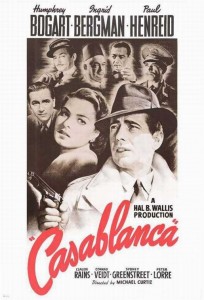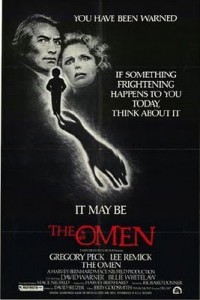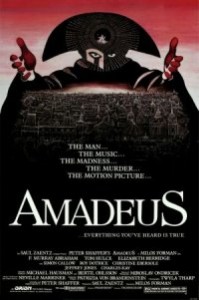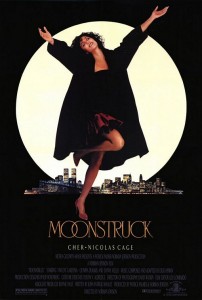
“And look at Bogart regarding [Paul Henreid]. Look at the absolute frankness with which he sees him and sizes him up and takes his measure. If you look at these two alternating face shots, you see the difference between these two actors. And you kind of guess why Bogart is so good.” —Roger Ebert in his commentary for Casablanca
Movie commentaries—you either love ’em or hate ’em. Or you’re merely indifferent to them. To some film buffs, the extra feature of a commentary might be the deciding factor in the purchase of a long-loved movie; to others, perhaps a majority, hearing an actor, a director or an academic ruminate about a movie, sometimes simply verbalizing what’s obvious on screen, might be a distraction, an unwanted divulgence of secrets, a violation of a fan’s relationship with the film’s characters.
For me, commentaries, when informative and expertly delivered, add additional knowledge and, in cases of aesthetic insights, a new appreciation of the films. Trouble is, when an artistic endeavor is analyzed, there are variances among the pundits, just as there are among films. Some movies lend themselves to this instructive approach better than others. Many times the commentary depends upon the kind of person observing and informing, even his objective—is it to inform, to entertain or to show off?
 For those, like myself, who enjoy commentaries and wish to hang around, let’s tackle a random sampling, from the worst to the best. Come to think of it, while I will save the best until last, let’s begin, not with the worst—that would be too unsettling at the outset—but with two examples of the secure middle ground, in this case, the duo method, partners in crime, as it were. These first two commentaries were selected because both convey a relaxed, “feel good” approach, as though two old cronies who have come to a cast/crew reunion party have moved away from the laughter and the banality of small talk to reminisce, beer bottles or wine glasses, as the case may be, in hand.
For those, like myself, who enjoy commentaries and wish to hang around, let’s tackle a random sampling, from the worst to the best. Come to think of it, while I will save the best until last, let’s begin, not with the worst—that would be too unsettling at the outset—but with two examples of the secure middle ground, in this case, the duo method, partners in crime, as it were. These first two commentaries were selected because both convey a relaxed, “feel good” approach, as though two old cronies who have come to a cast/crew reunion party have moved away from the laughter and the banality of small talk to reminisce, beer bottles or wine glasses, as the case may be, in hand.
It was only after pigeonholing these two films for study that I realized how different they are in both subject matter and time period. The older first. Accompanying the visuals in The Omen are its director Richard Donner and film editor Stuart Baird. Other Donner/Baird collaborations include Lethal Weapon, Superman and Ladyhawke. Most of the people the two men discuss are sadly dead—Gregory Peck, composer Jerry Goldsmith and Lee Remick, who, as Donner laments, “went too early.”
There obviously isn’t any script as the two men laugh and joke. It now seems so long ago, they agree, that Goldsmith, whose magnificent score they praise, seemed thirteenth at the time. They remember the flimsy bathroom set in one scene between Peck and Remick, Donner providing little footage for Baird to edit and baboons in a zoo fracas having to be baited with food to attack Remick and her young son (Harvey Stephens), soon to be evil incarnate. And the giraffe that had a heart attack! Baird dispels, at least in this congenial environment, the image of the uptight Englishman by doing a little boy impersonation; Donner responds by parodying Baird and “those damn monkeys.” The banter is good-humored and well-intended and conveys the light approach sometimes taken in making movies, even horror movies like The Omen.
 If this is the beer-drinking pair, then the next pair must have wine glasses in their hands with a bottle of Pinot Noir at the ready. The film is Amadeus and the commentary is shared by director Milos Forman and the film’s screenwriter Peter Shaffer, like Baird, an Englishman. Here again the repartee is relaxed and spontaneous, the pair seeming to be old pals, recalling a good time had by all.
If this is the beer-drinking pair, then the next pair must have wine glasses in their hands with a bottle of Pinot Noir at the ready. The film is Amadeus and the commentary is shared by director Milos Forman and the film’s screenwriter Peter Shaffer, like Baird, an Englishman. Here again the repartee is relaxed and spontaneous, the pair seeming to be old pals, recalling a good time had by all.
Behind the opening scene, Forman observes that no critic noticed the cat when Vincent Schiavelli is trying to get Salieri (F. Murray Abraham) to open the door to his room. (More conspicuous, perhaps, is the little dog at the train station screen door in the beginning of In the Heat of the Night.) Forman and Shaffer’s conversation is a bit more esoteric than that in The Omen. Forman, in his noticeable Czech accent, remarks that a building used as an insane asylum in the film was built by Maria Theresa in the eighteenth century and postulates that Mozart and Beethoven were killed by the same syphilitic germ, transmitted through various prostitutes. That about the building is fact, about the traveling germ highly unlikely; the latest hypotheses are that Mozart died of mercury poisoning (the liquid a remedy at the time for syphilis) and that Beethoven died of lead poisoning (from drinking out of pewter mugs).
A small point the average viewer would never consider, as Forman indicates, is that chandeliers in the opera house had to be lowered often to replace the ever-melting candles, that the tallow tubes were not lighted during rehearsals, too expensive. Shaffer expresses his usual dislike for nude scenes, but feels the one with Elizabeth Berridge is justified. (I don’t.) He challenges Forman’s enthusiasm for the Mozart Requiem, which Mozart (Tom Hulce) dictates to Salieri toward the end, saying there is “too much of the dark D minor.” Clearly, these two fellows are guzzling wine!
 Other films have, of course, been accompanied by multiple talkers. Three highly successful ones come to mind. In the Line of Fire is hosted by director Wolfgang Petersen and he is joined by, as he says, someone who “doesn’t want to be here,” J. M. Kenny, producer/director of this Special Edition (2000) of the 1993 film. The German director expresses gratitude for his apparently warm assimilation into the Hollywood scene, the professionalism of Clint Eastwood and the good fortune in having Ennio Morricone, “the greatest composer in the world,” score his film.
Other films have, of course, been accompanied by multiple talkers. Three highly successful ones come to mind. In the Line of Fire is hosted by director Wolfgang Petersen and he is joined by, as he says, someone who “doesn’t want to be here,” J. M. Kenny, producer/director of this Special Edition (2000) of the 1993 film. The German director expresses gratitude for his apparently warm assimilation into the Hollywood scene, the professionalism of Clint Eastwood and the good fortune in having Ennio Morricone, “the greatest composer in the world,” score his film.
Director Robert Mulligan and producer Alan Pakula, both now unfortunately gone, are an amiable pairing who see eye-to-eye in conveying their poignant and tragic story of the happenings in a small Southern town during the Great Depression in To Kill a Mockingbird. They recount Gregory Peck teaching Phillip Alford (Jem) to play chess and the actor inviting the children to his home over several weekends. Agent Boaty Boatright is fanatical in procuring the child actors, and, Mulligan says, “She went down South, where she knew everybody except the ghost of General Lee,” which I find poetic. Mulligan relates first hearing, over the telephone, the opening theme of the main title when composer Elmer Bernstein called one Sunday to play it for him on the piano.
 The making of Moonstruck is well documented by director Norman Jewison and screenwriter John Patrick Stanley. The director speaks of the failure of an early preview, when a conductor’s baton rapping on the lectern and what appears to be the beginning of La Boheme turned off the audience. Jewison realizes he has to be more subtle, now simply suggesting the operatic connection with a truck delivering sets to the Metropolitan Opera. Nicolas Cage’s character, as he admits and I agree, is a bit implausible, but he also knows there’ll be that moment when Cher blossoms into a beauty, as, indeed, she does after getting a new wardrobe and a visit to the hair dresser. Jewison made a point, he says, to photograph the Chagall paintings in the Met’s lobby, but also on the wall for observant classical music devotees is a painting of Richard Strauss.
The making of Moonstruck is well documented by director Norman Jewison and screenwriter John Patrick Stanley. The director speaks of the failure of an early preview, when a conductor’s baton rapping on the lectern and what appears to be the beginning of La Boheme turned off the audience. Jewison realizes he has to be more subtle, now simply suggesting the operatic connection with a truck delivering sets to the Metropolitan Opera. Nicolas Cage’s character, as he admits and I agree, is a bit implausible, but he also knows there’ll be that moment when Cher blossoms into a beauty, as, indeed, she does after getting a new wardrobe and a visit to the hair dresser. Jewison made a point, he says, to photograph the Chagall paintings in the Met’s lobby, but also on the wall for observant classical music devotees is a painting of Richard Strauss.